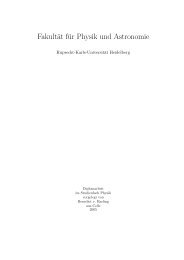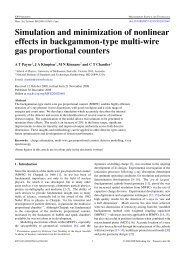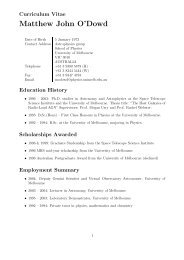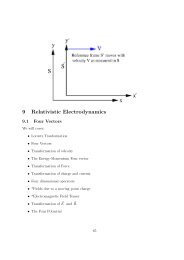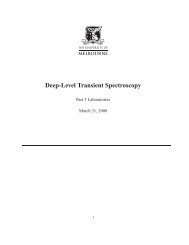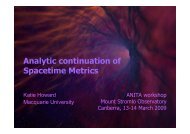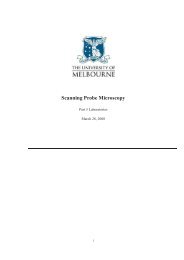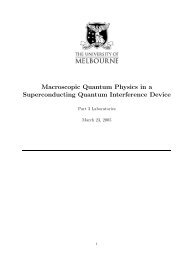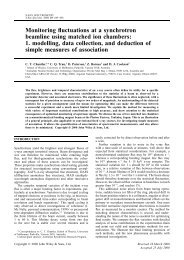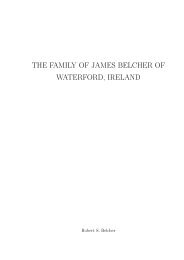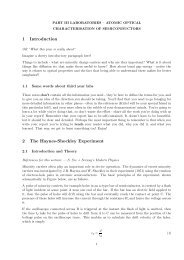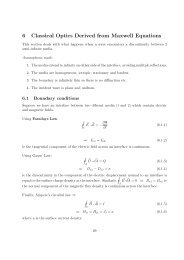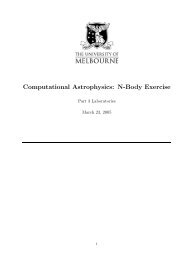Bibliography - School of Physics - University of Melbourne
Bibliography - School of Physics - University of Melbourne
Bibliography - School of Physics - University of Melbourne
Create successful ePaper yourself
Turn your PDF publications into a flip-book with our unique Google optimized e-Paper software.
120 CHAPTER 9. ELECTRON SPIN RESONANCE<br />
Connect the RF unit to the power supply, place the sample in the center <strong>of</strong> the coil. Position<br />
the RF coil as centrally as possible into the Helmholtz coils.<br />
After everything is connected examine the voltage across the resistor and the current through<br />
the RF unit simultaneously. Adjust the current through the coils. What happens to the current<br />
through the RF unit?<br />
Question (c): Why do the features on the plot change? Discuss with your demonstrator.<br />
You should now be able to determine how best to measure B when resonance occurs.<br />
Question (d): How should the maximum current through the coils be chosen such that you<br />
reduce the error when measuring B at resonance?<br />
Measure the voltage at which resonance occurs, as a function <strong>of</strong> RF frequency. Use the<br />
small bar magnet to observe any changes when you change the magentic field by placing<br />
the magnet near the sample such that it is parallel and then perpendicular to the coil axis.<br />
Explain.<br />
Question (e): You should have enough information to determine g s . How does it compare<br />
to the nominal g s = 2?<br />
Question (f): Why to we observe a width on the resonance peak?<br />
9.7 Extension: electron diffraction<br />
This section contains some extra work for efficient or ambitious students. It should only be<br />
attempted when all the work in the previous section has been completed. You can still get<br />
full marks having done only the previous section.<br />
9.7.1 Overview<br />
The postulate that matter may also possess wave-like properties was one <strong>of</strong> the most stunning<br />
and unifying hypotheses <strong>of</strong> this century. In 1924 de Broglie, working from arguments based<br />
on the properties <strong>of</strong> wave packets, hazarded that the wavelength <strong>of</strong> these matter waves could<br />
be obtained from the same relationship that held for light, namely<br />
λ = h p<br />
(9.9)<br />
where λ is the wavelength, p is the momentum and h is Planck’s constant 1 .<br />
Davisson and Germer obtained the first experimental evidence for matter waves by reflecting<br />
slow electrons from the face <strong>of</strong> a single nickel crystal. The wavelength that they were able to<br />
1 Some useful data, including a value for h, are provided in section 9.8.



